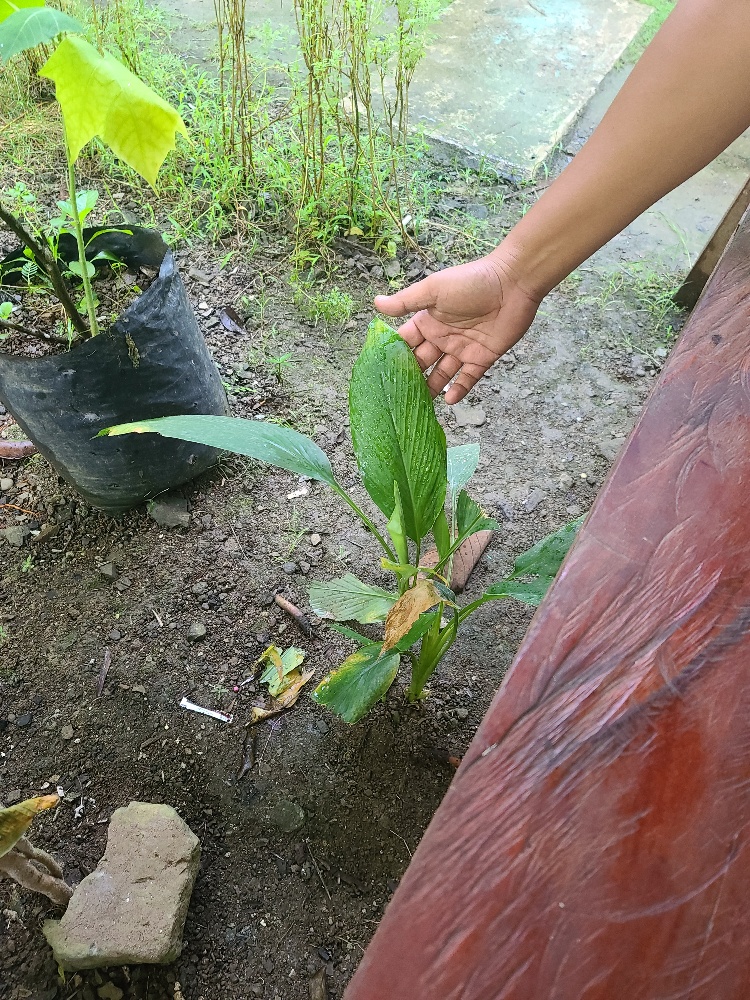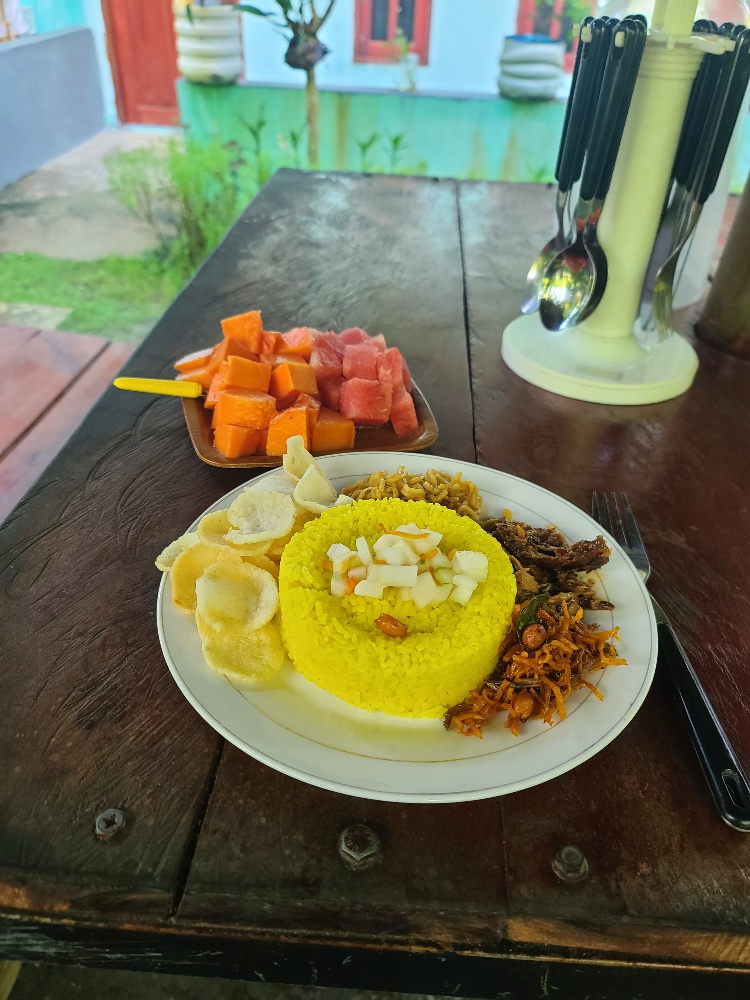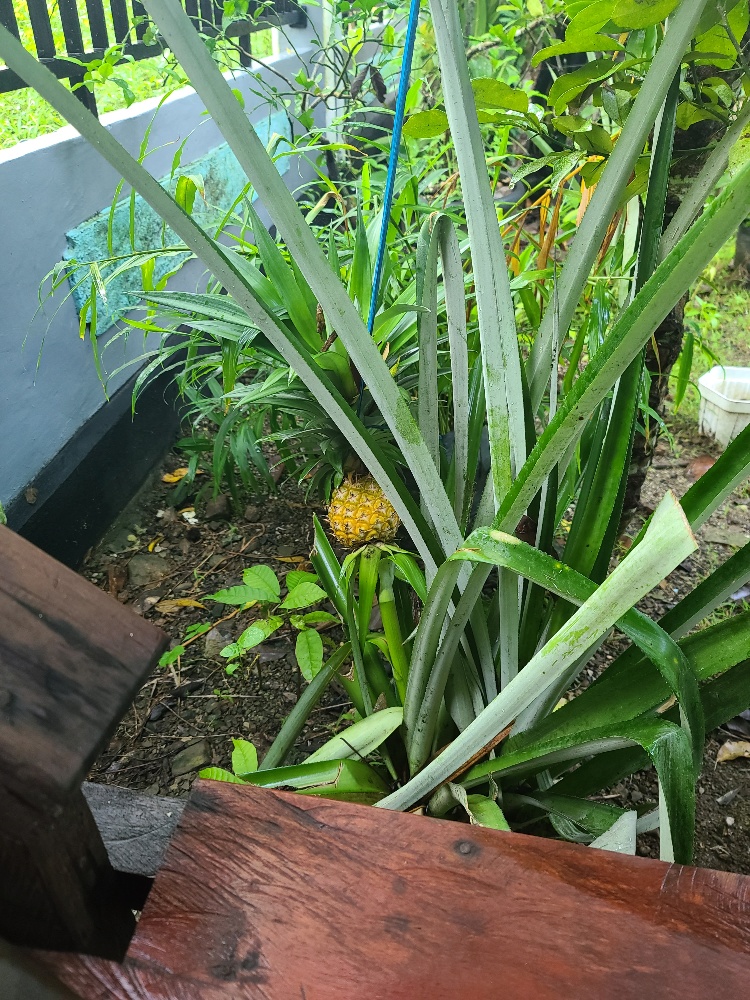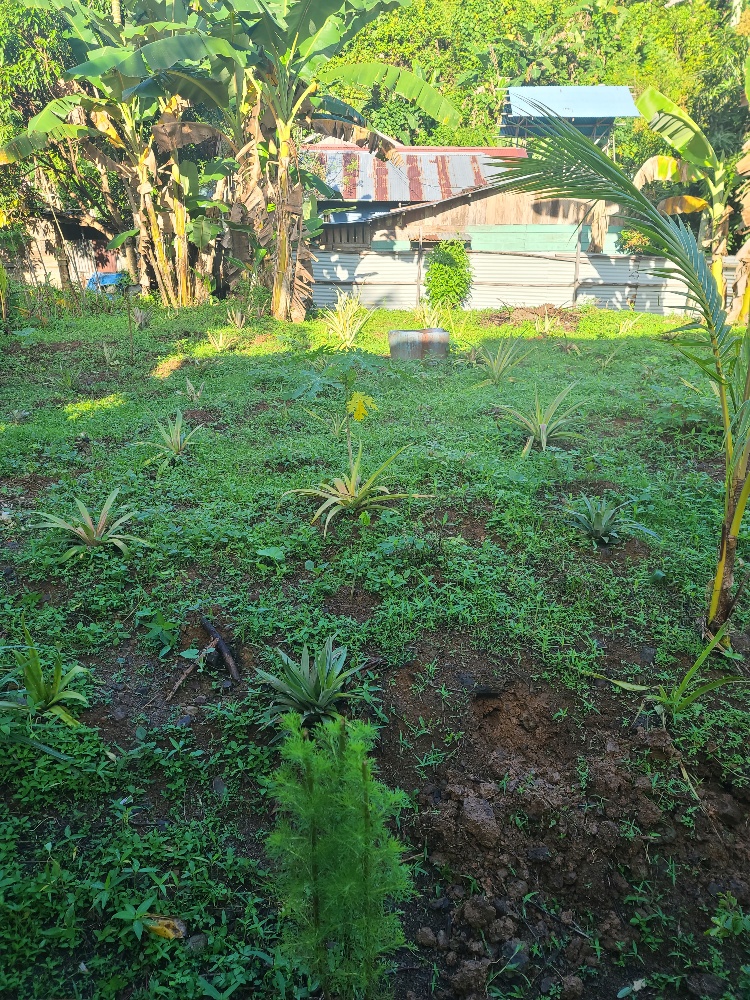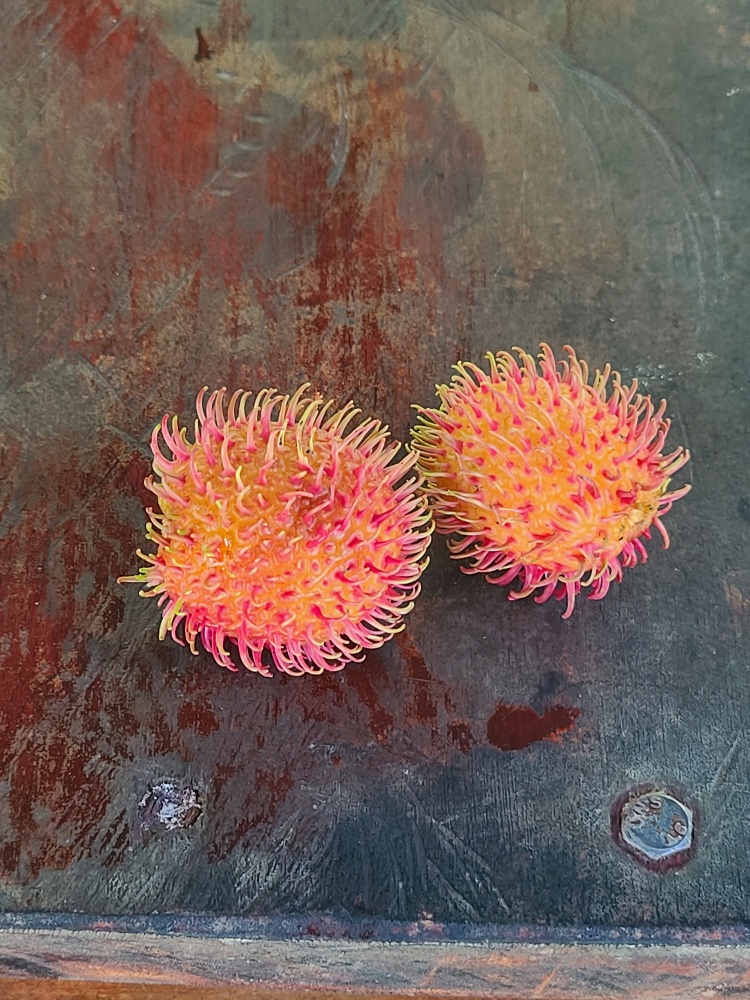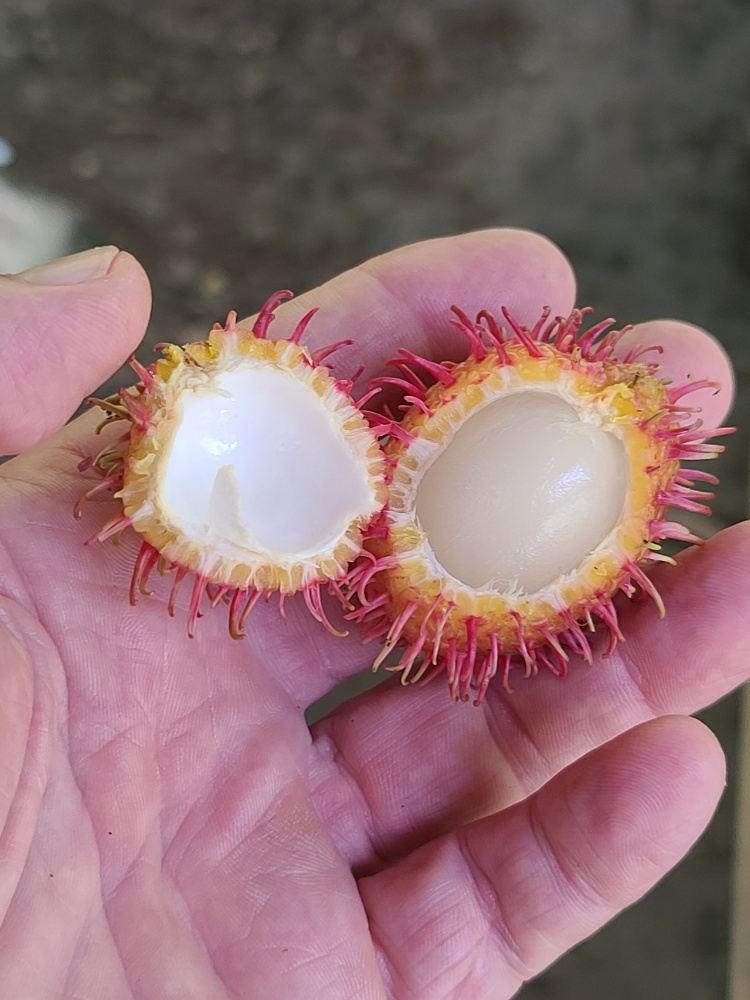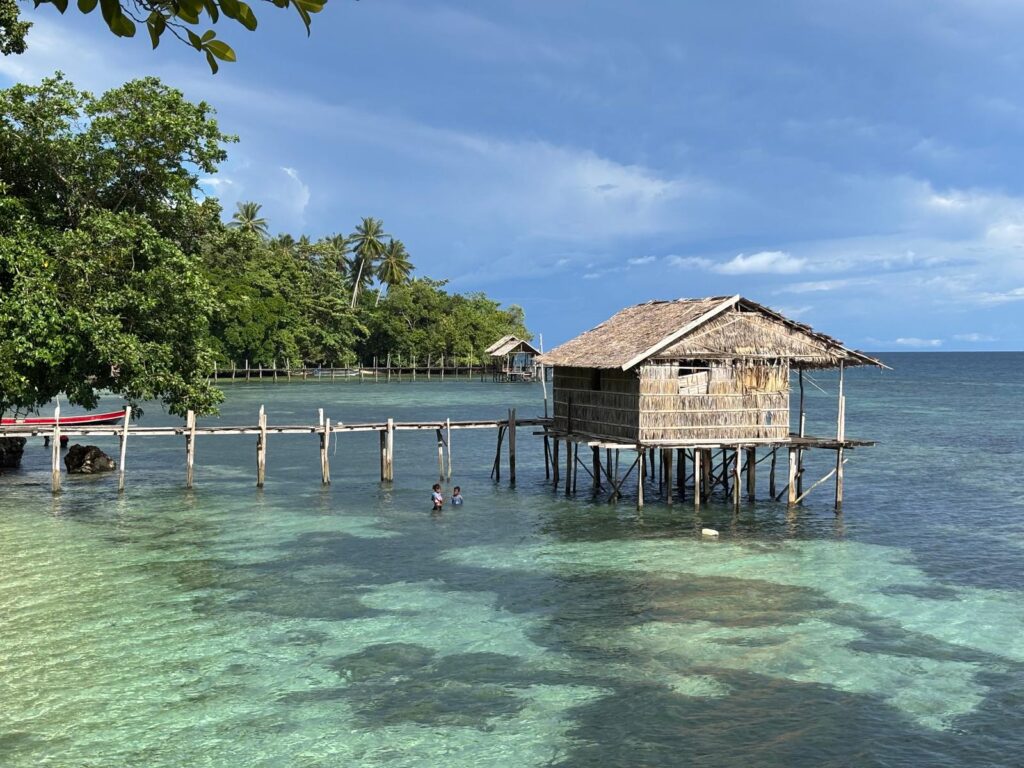I am not sure how best to describe the Raja Ampat region of West Papua, Indonesia other than to say I want to go back and spend much more time there. Yes, there is poverty. Yes, there is a lack of basic infrastructure, but it is also located in what is called “The Coral Triangle” where the marine life and coral reefs are some of the most intact and diverse in the world. Both disheartening, and awe inspiring. Sadness and unimaginable beauty. Yes, I want very much to get back there. To spend more time in a region that almost feels lost in time. That is Raja Ampat.
I was there also to learn more of the foods and crops of the region. What I found was of course bananas and coconuts. But also leachy nuts, small delicious pineapples, mangos, green papayas, and turmeric plantings, in local gardens used to make the famous yellow Indonesian rice – so good!
Like so many places in the tropics, there were many kinds of bananas, and all of them more flavorful then the large bananas found in western markets. The bananas are smaller, firmer and tastier. They also fill you up more, and are more of a real food. A few bananas and you are good through the rest of the afternoon out on the water or working in the hills. Coconuts are also everywhere. Used to quench thirst and after, to feed on the meat. Seeing coconuts floating across the tropical oceans, it was easy to understand how they have spread throughout the world.
Indonesian yellow rice is made by taking a few leaves from the turmeric plant and cooking the rice with the leaves, after they have been shredded and yes, coconut milk. The yellow rice is using three of the most common ingredients avalible to even the poorest of the islands. The mild taste is a great addition to regular rice and turmeric is well known for it’s healthful properties.
Nasi kuning (Indonesian/Malay for: “yellow rice”), or sometimes called nasi kunyit (Indonesian/Malay for: “turmeric rice”), is an Indonesian fragrant rice dish cooked with coconut milk and turmeric, hence the name nasi kuning (yellow rice).
I was also able to see, harvest and eat an Indonesian pineapple. Again, grown in a backyard garden, the Indonesian pineapple is smaller then the larger pineapple found in western markets, however it is sweeter and more delicious! Interestingly the fruit is ready to harvest in only one year as opposed to the three years required for the larger pineapple grown in Japan or Hawaii. The gardener simply cut the top off of the pineapple we were about to eat and planted it at that time right back into the field!
Leechee nuts were growing just above us in the trees above the garden. They were easy to split open and eat right there in the garden. They were delicious.
Lychee is a tropical fruit, not a nut. Lychee, known for its sweet, exotic taste, is characterized by a rough, bumpy rind, ranging from red to pale-green. While the US considers lychee a tree nut for labeling purposes, most people with tree nut allergies can eat lychee.
While there were quite a few local fruits available, it is hard to determine whether or not their production could be increased and sold into the global markets. I think there is an opportunity to expand production of the fruits mentioned here. Even if the bananas were dried for export and the Leechee nuts were juiced to help shipping, there is land in Raja Ampat that could be developed into agriculture for these local fruits. All of the fruits mentioned here today were grown without any pesticides or synthetic fertilizers, so they would all be good prospects for an organic, or alternative certification.
